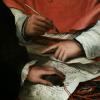My Dip Pens
-
Forum Statistics
354.7k
Total Topics4.6m
Total Posts -
Member Statistics
127,691
Total Members4,236
Most OnlineNewest Member
IyannaTuh
Joined -
Images
-
Albums
-
namrehsnoom-16
- By namrehsnoom,
- 0
- 0
- 99
-
namrehsnoom-15
- By namrehsnoom,
- 0
- 0
- 99
-
namrehsnoom-14
- By namrehsnoom,
- 0
- 0
- 100
-
namrehsnoom-13
- By namrehsnoom,
- 0
- 0
- 100
-
1 -January-Feb 2025 reviews
- By yazeh,
- 0
- 0
- 30
-


















.thumb.jpg.f07fa8de82f3c2bce9737ae64fbca314.jpg)



.thumb.jpg.331e554113c33fb39d5bf3233878978a.jpg)





Recommended Posts
Create an account or sign in to comment
You need to be a member in order to leave a comment
Create an account
Sign up for a new account in our community. It's easy!
Register a new accountSign in
Already have an account? Sign in here.
Sign In Now